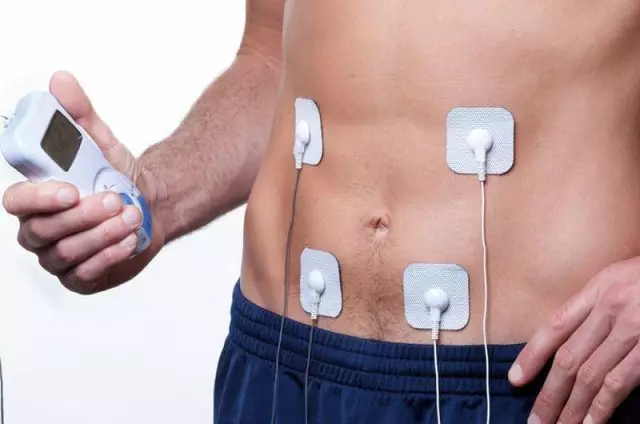- Author Curtis Blomfield [email protected].
- Public 2023-12-16 20:44.
- Last modified 2025-01-23 17:01.
The muscles of the lower extremities perform an essential function. They carry the load of the whole body. Each muscle element performs a specific task. The muscles of the lower extremities provide flexion, raising, lowering the legs, movement of the feet, fingers. All elements are closely interconnected. Violation of the activity of one of them leads to a failure in the functioning of others. Of particular importance in the system are the muscles of the lower leg of the deep posterior group. They provide bending of the legs, feet and fingers. One of the most important elements of this department is the popliteal muscle. Consider it.

Destination
The popliteal muscle provides flexion and extension of the leg. In addition, it performs a protective function. It protects the femur from displacement during the transfer of body weight to one limb and when kneeling. In some cases, it begins to pull. In this case, during the extension of the leg, pain occurs. With partial or complete dysfunction of the muscle, the mobility of the knee joint is significantly limited. As a rule, this condition is temporary. However, if the traumatic factor continues to operate without proper treatment, mobility may be lost for a long time.
Reasonsdamage
The popliteal muscle is injured due to excessive load on the joint or when it is placed in a position that is not characteristic of human anatomy. This element of the system is protected by other tissues. Therefore, only a serious injury can disrupt its functioning. Causes of injury can be:
- Wearing shoes with high heels. In such cases, there is additional pressure on the hamstring tendon.
- A sharp start from a static position. The stop and transfer of the center of gravity in such cases is carried out due to muscle overstrain. The risk group includes skiers, football players, athletes, skaters. It is worth saying that in trained people, the popliteal muscle is more or less adapted to such loads. Therefore, injuries tend to occur in beginners.
- Reckless driving over rough terrain, the need to overcome obstacles, abrupt transition from walking to running, and similar factors can create the conditions for injury.

The popliteal muscle can also disturb after undergoing surgical interventions in the joint or pathologies that affect its structure. In addition, in practice, congenital disorders are also detected. In such cases, there is underdevelopment of muscle tissue, permanent contracture (limited movement) of the joint of varying severity.
Injury Help
The main symptoms of muscle damage are pulling pain, discomfort in the knee area. Feelings are especially pronounced inmovement time during leg extension and flexion. Stretch therapy is based on natural regeneration. Minor damage will repair itself. If there are ruptures of ligaments and tissues, additional exposure is necessary. To speed up the recovery process, rest or a sparing regimen should be provided to the injured leg. NSAIDs may be used to reduce pain and inflammation, if present.

Massage
After a long period of inactivity, muscle atrophy may occur. In this regard, with a sparing regimen, a massage is prescribed. It improves blood circulation, warms up the muscle and does not load it. To do this, you need to sit on a chair. The leg must be bent at the knee and massage the popliteal region with medium effort. Movements must be careful. Excessive pressure must be avoided. There are many fragile elements in this area, so it is highly undesirable to use any improvised means. Massage should be done with your fingers.

Extra
In case of extensive injuries, accompanied by bruising and tears, you should immediately consult a doctor. As a rule, the patient assesses the severity of injuries based on their own feelings and on the appearance of the injured area. In most cases, this approach is justified. However, if the damaged area looks normal, there is no severe pain, but at the same time, the ability to fullyflexion / extension of the leg is absent for a long time, you need to see a doctor.






